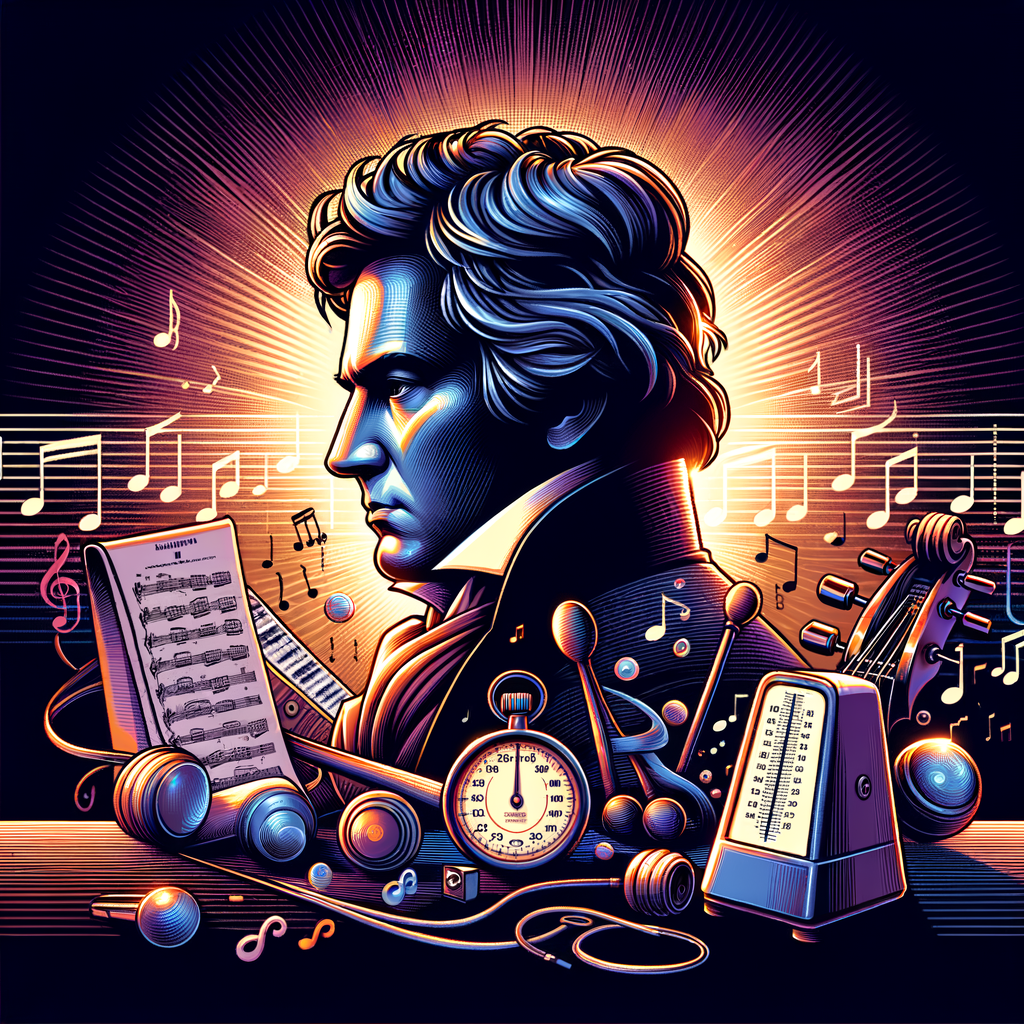
The Ongoing Debate: Revisiting Beethoven’s Metronome Marks
Ludwig van Beethoven, a pivotal figure in classical music, was among the first composers to adopt the metronome—a device invented in the early 19th century to provide precise tempo indications. His enthusiasm for this tool led him to include specific metronome markings in his compositions, aiming to guide performers toward his intended tempos. However, these markings have sparked considerable debate among musicians and scholars, with some arguing that they are unfeasibly fast and others striving to honor Beethoven’s precise instructions.
Beethoven’s Introduction to the Metronome
The metronome, patented by Johann Maelzel in 1815, caught Beethoven’s attention as a means to convey exact tempos in his music. Prior to its invention, composers relied on descriptive terms like “Allegro” or “Adagio,” which were open to interpretation. Beethoven’s adoption of the metronome allowed him to specify beats per minute (BPM), reducing ambiguity in performance. He began incorporating these markings into his scores around 1817, believing they would ensure his works were played as he envisioned.
Beethoven: The Ultimate Biography
Controversy Surrounding the Metronome Markings
Despite Beethoven’s intentions, many of his metronome markings have been deemed excessively rapid. For instance, the first movement of his “Hammerklavier” Sonata (Op. 106) is marked at half note = 138 BPM, a tempo that challenges even the most skilled pianists. Similarly, the Ninth Symphony’s final movement carries a marking that some performers find uncomfortably swift. These brisk tempos have led to questions about the accuracy of Beethoven’s metronome or his state of mind when setting them.
Theories Explaining the Discrepancies
Several theories have emerged to explain the perceived discrepancies in Beethoven’s tempo indications:
- Faulty Metronome: One prevalent theory suggests that Beethoven’s metronome was defective, leading to incorrect tempo markings. The original device still exists but is missing its weights, making it impossible to verify its accuracy. Some researchers propose that a malfunctioning metronome could have produced the unusually fast tempos Beethoven noted. Smithsonian Magazine
- Hearing Loss Impact: Beethoven’s progressive deafness might have influenced his perception of tempo. As his hearing deteriorated, he may have misjudged the speeds, resulting in faster metronome markings. However, this theory is speculative and lacks concrete evidence.
- Deliberate Testing: Another intriguing hypothesis posits that Beethoven intentionally provided extreme tempos to test performers’ understanding of his music. According to this view, musicians who adhered strictly to the rapid markings without considering musicality might be missing the essence of the composition. Markus Eriksen
- Post-Composition Marking: Some scholars believe that Beethoven added metronome markings to his compositions years after their creation. Reflecting on his works without playing them might have led him to choose tempos that were faster than practical performance would suggest. Markus Eriksen
Modern Interpretations and Performance Practices
The debate over Beethoven’s metronome markings continues to influence contemporary performances. Musicians and conductors adopt varying approaches:
- Strict Adherence: Some performers strive to follow Beethoven’s markings precisely, viewing them as integral to his artistic intent. Conductor Benjamin Zander, for example, advocates for adhering to these tempos, believing they capture the vitality and character Beethoven envisioned. Ben Zander
- Flexible Interpretation: Others argue for a more flexible approach, adjusting tempos to suit modern instruments, acoustics, and audience expectations. They contend that strict adherence may not always serve the music’s expressive needs and that Beethoven’s markings should be interpreted within a broader musical context.
The Role of Historical Context
Understanding the historical context of Beethoven’s time is crucial in this debate. Instruments of the early 19th century differed significantly from today’s counterparts, potentially affecting the feasibility of certain tempos. Additionally, performance practices have evolved, and what was customary in Beethoven’s era may not directly translate to modern concert settings.
Conclusion
The ongoing debate over Beethoven’s metronome marks underscores the complexities of interpreting his music. While his adoption of the metronome was a pioneering effort to bring precision to musical performance, the controversies surrounding his tempo indications highlight the dynamic relationship between a composer’s intentions and performers’ interpretations. Whether one chooses to adhere strictly to Beethoven’s markings or opts for a more flexible approach, the ultimate goal remains to honor the spirit and emotional depth of his enduring works.